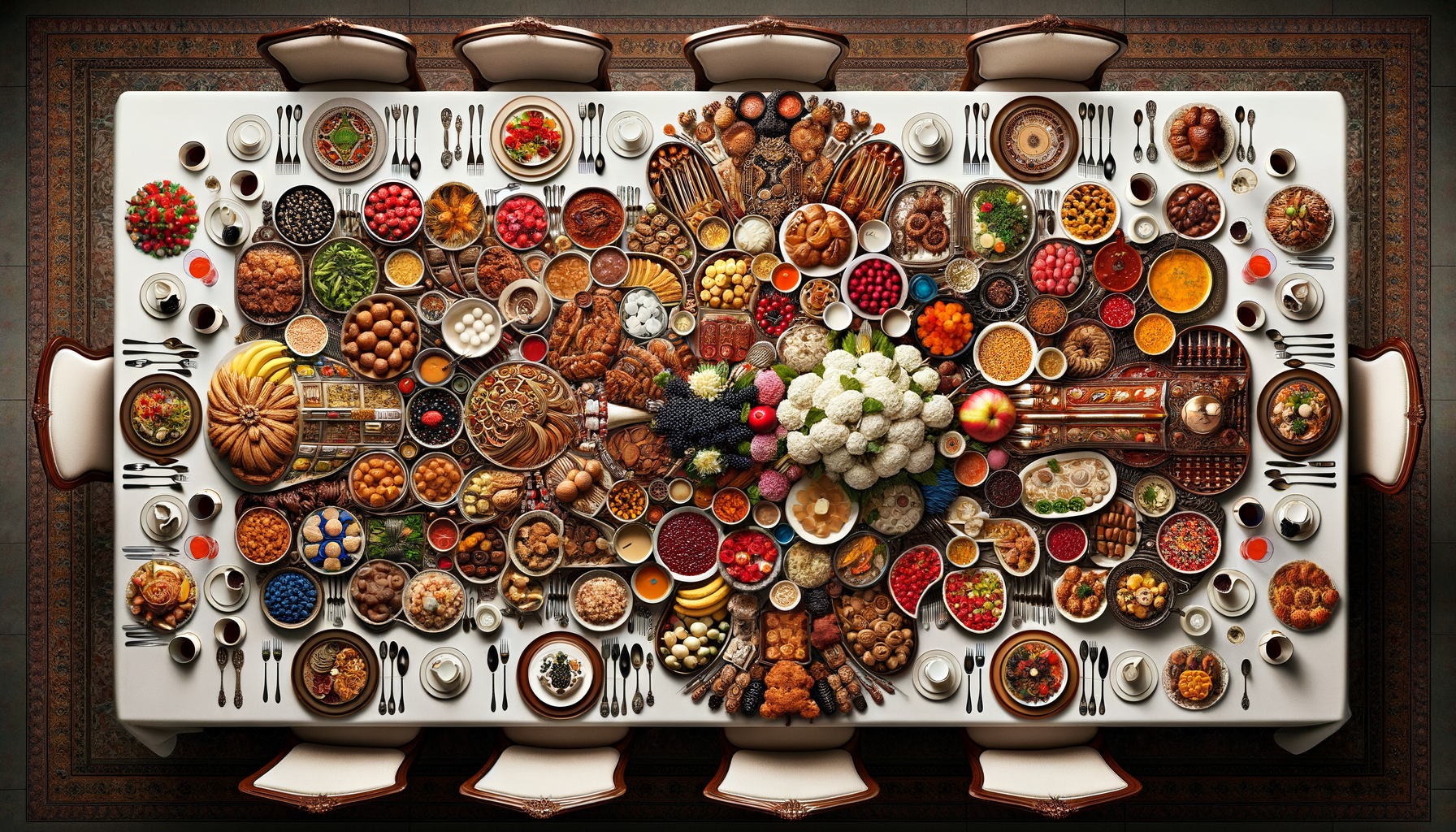Understanding Meal Types Across Cultures
Meals are an integral part of daily life, and their types vary widely across different cultures. Breakfast, lunch, and dinner are common in many parts of the world, yet each culture imbues these meals with unique characteristics. For instance, in many Western societies, breakfast is often a quick affair, featuring items like cereals and toast. Conversely, in countries like India, breakfast can be a hearty meal with dishes like idli or paratha.
Lunch and dinner also showcase cultural diversity. In Mediterranean countries, lunch is considered the main meal of the day, often involving multiple courses. Meanwhile, in the United States, lunch is typically a lighter meal, with dinner taking center stage in the evening. Additionally, some cultures have unique meal types, such as the Japanese kaiseki, which is a traditional multi-course dinner that emphasizes seasonality and artistry.
Snack times and afternoon teas are other examples of meal types that reflect cultural nuances. In the UK, afternoon tea is a cherished tradition, while in Spain, the ‘merienda’ is a light meal enjoyed in the late afternoon. These variations highlight how meals are not just about sustenance but are also deeply rooted in cultural identity and social practices.
Service Styles: From Formal to Casual
The way meals are served can significantly affect the dining experience. Service styles range from formal, multi-course meals to casual, self-service buffets. Fine dining establishments often employ formal service, where meals are served by waitstaff in a structured manner. This style is prevalent in French cuisine, where each course is presented sequentially, allowing diners to savor each dish.
In contrast, casual dining experiences, such as those found in family-style restaurants, encourage a more relaxed atmosphere. Here, dishes are served in large portions meant for sharing, fostering a sense of community and togetherness. Buffets offer yet another service style, popular in places like Las Vegas, where diners can choose from a wide array of dishes at their leisure.
Service styles also reflect cultural attitudes towards dining. In Japan, the omakase style allows the chef to select dishes for the diner, showcasing the chef’s expertise and the trust between the diner and the chef. Meanwhile, the communal eating style of Ethiopian cuisine, where diners share from a common platter, emphasizes hospitality and unity.
The Influence of Culture on Dining Practices
Culture plays a pivotal role in shaping dining practices around the world. It influences not only what is eaten but also how it is consumed. In many Asian countries, the use of chopsticks is a cultural norm, while in Western countries, forks and knives are the standard utensils. Such practices are deeply ingrained and often tied to historical and social contexts.
Religious beliefs also significantly impact dining customs. For example, in Islamic cultures, Halal dietary laws dictate permissible foods and preparation methods, while in Hinduism, vegetarianism is prevalent due to the principle of ahimsa, or non-violence. Similarly, the Jewish practice of keeping kosher involves specific dietary rules that reflect religious teachings.
Festive occasions often bring out the most distinctive cultural dining practices. During Chinese New Year, families gather for a reunion dinner featuring symbolic foods that represent prosperity and good fortune. In the United States, Thanksgiving is marked by a traditional meal centered around turkey, reflecting historical and cultural significance.
Globalization and Its Impact on Dining
Globalization has significantly influenced dining habits worldwide, leading to a fusion of culinary traditions. The widespread availability of international cuisines has introduced people to new flavors and dining experiences. Sushi, once a Japanese delicacy, is now enjoyed globally, while Italian pasta dishes have become staples in many countries.
This cross-cultural exchange has also led to the creation of fusion cuisines, where chefs blend elements from different culinary traditions to create innovative dishes. For example, Tex-Mex cuisine combines Mexican and American flavors, resulting in popular dishes like nachos and fajitas.
However, globalization also poses challenges, such as the homogenization of food cultures and the loss of traditional culinary practices. Fast food chains have proliferated across the globe, often at the expense of local food traditions. Despite these challenges, globalization has enriched the dining landscape, offering diners a diverse array of options and experiences.
Conclusion: The Ever-Evolving World of Dining
Dining is a dynamic aspect of human life, reflecting the rich tapestry of cultural influences, historical traditions, and modern innovations. As we navigate the complexities of meal types and service styles, it becomes evident that dining is more than just eating; it is a celebration of culture, community, and creativity.
Understanding the nuances of dining practices across the world fosters appreciation and respect for the diversity that exists within our global community. Whether enjoying a formal dinner or a casual meal with friends, the act of dining brings people together, creating shared experiences and memories that transcend cultural boundaries.




Leave a Reply